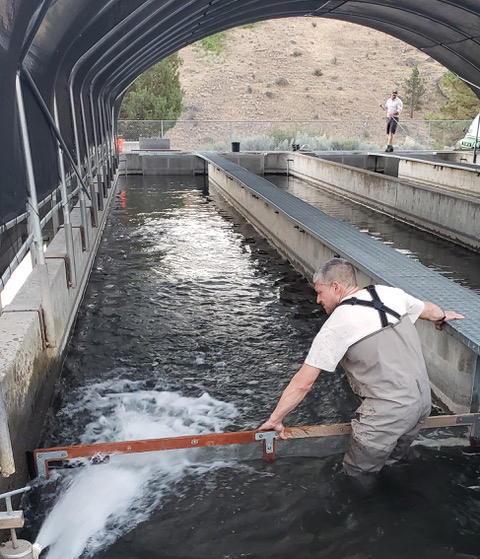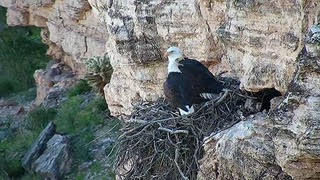Threatened and endangered species feature: bald eagle
What’s brown and white and found all over Michigan? Bald eagles! The story of the bald eagle is a tragedy turned into a narrative of redemption and success.
 In the earliest records of birds in Michigan, bald eagles were reported to be found nesting from Monroe County in the south all the way up to Gogebic County in the north. In fact, bald eagles were found from the Atlantic to the Pacific and from northern Canada all the way to Mexico, and their numbers were estimated to be as high as 100,000 nesting birds.
In the earliest records of birds in Michigan, bald eagles were reported to be found nesting from Monroe County in the south all the way up to Gogebic County in the north. In fact, bald eagles were found from the Atlantic to the Pacific and from northern Canada all the way to Mexico, and their numbers were estimated to be as high as 100,000 nesting birds.
By 1950, however, the bald eagle’s numbers had been on a slow decline for a couple of centuries as people destroyed their habitat, ate their food and killed them to protect livestock and the small game animals that were part of their diet.
This decline accelerated dramatically in the 1950s due mostly to the increasing use of pesticides that contained DDT and increased industrial production that used PCBs. These chemicals became concentrated in the eagles’ prey and accumulated in the eagles’ bodies. They weakened the eagles’ eggs so that they were crushed when the adult birds tried to incubate them and also led to higher rates of death in adult eagles.
By 1963, there were fewer than 1,000 nesting eagles remaining. Thanks to the banning of DDT and PCBs by the U.S. Environmental Protection Agency and increased protection of eagles and their habitat under the U.S. Endangered Species Act and Michigan’s Endangered Species Act, the eagle has recovered to a point where its existence is no longer imperiled, with estimates of over 20,000 nesting eagles in the Lower 48 states.
With over 700 active eagle nests in the state, you may encounter bald eagles almost anywhere in Michigan. Nests are found in almost all of the state’s 83 counties. Nesting birds tend to be secretive and very sensitive to disturbance, and they don’t build nests in areas with significant human activity. But when they find a place that works for them, they will come back to the same nest year after year, slowly building it bigger over time – one nest was found that was 30 years old and weighed two tons!
In the spring and summer, eagles are fairly solitary and each pair will defend its nest site from interlopers. During the winter, however, birds will congregate anywhere that open water or other food sources can be found. Groups of up to 10-15 birds are often reported along open water on rivers and warm-water discharge areas for power plants as well as feeding on the carcasses of road-killed deer.
Most of us are confident that we can identify a bald eagle. With its dark chocolate brown body and striking white head and tail, it can be mistaken for few other birds when it’s fully grown. But did you know that it takes eagles five years to grow into their distinctive plumage? Bald eagles in their first year are mostly brown; as they get older, the amount of white mottling on their body increases until they get their adult coloration. And while the bald eagle is one of the largest birds in North America, with a wingspan of about 6.5 feet and a height of about 2.5-3 feet, they only weigh 7-10 pounds – about as much as a housecat – and about 1.5 pounds of their weight is just their feathers!
You can help conserve Michigan’s bald eagles today. If you see an eagle, enjoy it from a distance. Don’t get too close to any eagle nest you find – the disturbance may cause the adults to abandon the site and the nest to fail. If you find an eagle nest, report it to the U.S. Fish and Wildlife Service (517-351-2555). The USFWS conducts annual nest surveys and is continuing to monitor the levels of DDT and PCBs found in eagles in Michigan. The biggest threat to bald eagles today is from lead poisoning, most likely as a result of feeding on gut piles left behind by hunters. Consider using lead-free ammunition when you hunt or hiding the gut pile so that it can’t be seen by eagles flying overhead.
Additional ways to help include making a donation to the Nongame Wildlife Fund. Donations help to conserve Michigan’s wildlife resources and their habitats. Or consider purchasing a habitat license plate, where $25 of your $35 donation will be used to conserve wildlife habitat. For more information on Michigan’s threatened and endangered species and the 40th-anniversary celebration, visit www.michigan.gov/wildlife. Bald eagle photo credit: Ron Holmes






